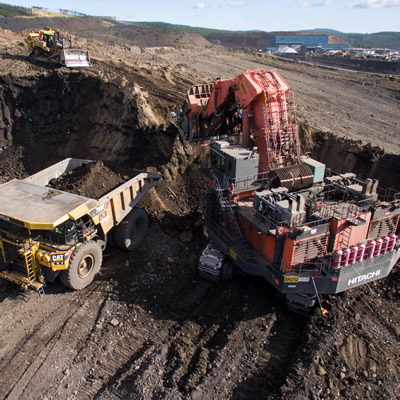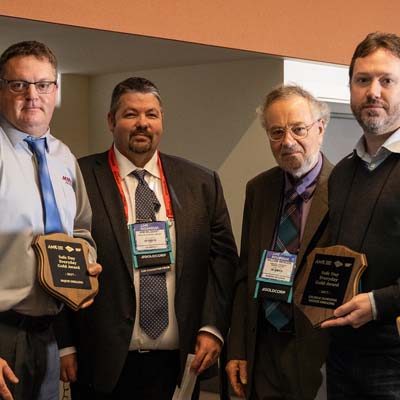The new push for health and safety in mining
Pacific Environmental Consulting keeps up with constantly-changing government safety regulations
The head of a health and safety consulting firm says mine companies need to make their safety programs more compatible with constantly changing government regulations.
Peter Hansen, general manager of British Columbia-based Pacific Environmental Consulting, says many mining companies haven't updated their safety programs and procedures in years and could benefit from some professional help. Health and safety issues regarding mines in British Columbia are largely governed by the provincial Mines Act and WorkSafeBC regulations, although sometimes Canadian Labour Code and provincial ministry of environment regulations are also involved. Pacific Environmental Consulting is a member of the Mining Suppliers Association of B.C.
Hansen said when he first got into the health and safety industry in 1986, B.C. legislation that then dealt with health and safety issues had been enacted in 1978. Those regulations, which are now administered by WorkSafeBC, underwent little change until 1998. However, in recent years that situation has definitely changed.
"They're constantly moving and changing their regulations," Hansen said about WorkSafeBC. "It's a moving target these days."
That trend is also affecting other government regulations in terms of health and safety issues concerning mines and Hansen doesn't see that situation changing anytime soon.
Furthermore, mine companies may face risks if they don't update their health and safety procedures to match changing government regulations. If an employee is hurt on the job and a company's safety procedures don't properly address the situation that led to the injury, expensive liability issues and/or non-compliance issues could come into play.
Better safe than sorry
Although some mine companies may be hesitant to hire a safety consulting firm to look at their safety programs and procedures, Hansen said it may be money well spent.
Hiring costs “pretty much mitigate those additional costs when you put them against that kind of measurement tool."
If a mining company does hire a safety consulting firm these days, Hansen said it should be to conduct a proper audit of company health and safety programs and procedures. Larger companies may have staff available to do proper auditing, but smaller and medium-sized companies may not.
"Basically it's going in and looking at the programs and processes in place, or going to be put into place, and making sure that they match specifically to the operation," he said.
Hansen said the mining sector is a growing part of Pacific Environmental's business. He founded the business as Hansen & Associates Ltd. in 1990 and it became Pacific Environmental Consulting in 1994. It was acquired by Houston, Texas-based Total Safety on Dec. 29, 2010.
"It's definitely something that's increasing year by year," Hansen said about his firm's mine-company business. "Probably [now] it would be five, six, seven per cent. Certainly it's gotten a lot busier in the last 12 months."
Hansen thinks at least part of the reason safety consulting firms may be getting more mining business these days is because more and more executives are becoming aware of the importance of occupational health and safety. For years, in many companies, a few employees received a little on-the-job safety training and ended up being the companies' safety specialists.
"I think I'm seeing more now what I would call safety professionals being hired," Hansen said. "I think the traditional safety guy is still there and is still needed. But because of the regulatory compliance and higher-end stuff now that needs to be done, a lot of mines are out there trying to get professionals. They want guys who can develop the program, develop compliance with the legislation, implement the structure of the program and ensure it's functioning properly."
What's on offer
Like other safety consulting firms, Pacific Environmental provides a wide variety of health and safety services. Probably the ones most pertinent to the mining industry are hazardous materials risk evaluation, management and support; environmental site assessment; safety training, program development and delivery; industrial hygiene and occupational health and safety.
The company employs over 50 full-time staff, which includes professional engineers, certified industrial hygienists, Canadian-registered safety professionals and applied science technologists with expertise in the occupational hygiene, safety, hazardous materials and environmental fields, to name a few.
Hansen said although the services most currently in demand from mining companies are safety training and compliance monitoring, there's really nothing that stands out. Each company has its own needs. But a message from Hansen on the company's website may indicate where the future lies.
"In 2010, we were involved in a WorkSafeBC industry group, discussing the development of the new lead and asbestos exposure guidelines and initiatives, along with silica exposure, wood dust and other workplace exposures, and, in our opinion, [this] will be the focus of the regulatory process for 2011-2012," it reads.








